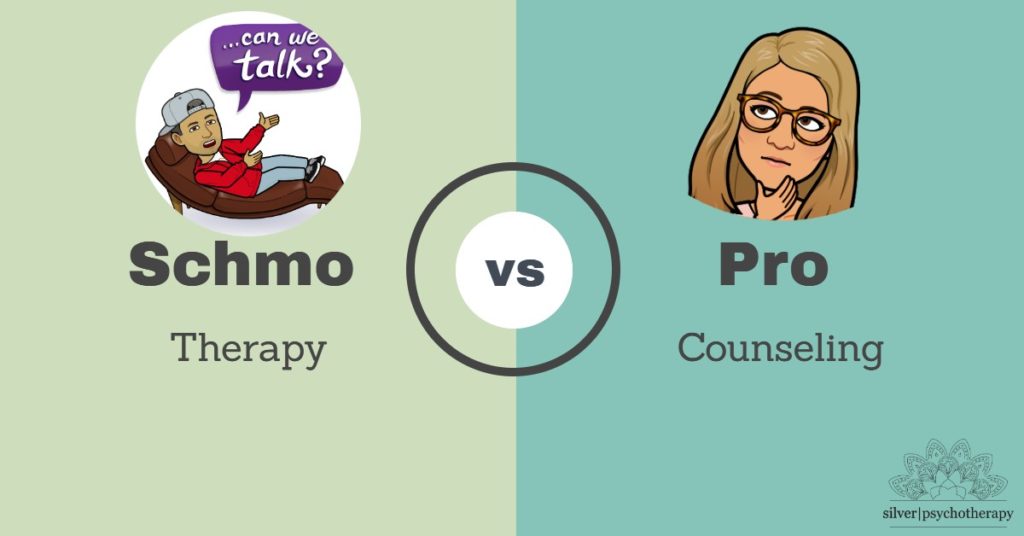What the Schmo says:
Aren’t they the same? What kind of Voodoo magic are you peddling? Don’t you just give advice? Why make everything so complicated! When you are confiding in someone, whether it is a friend, over a drink or a professional with a bunch of degrees on the wall- aren’t you getting both therapy and counseling? Therapy is figuring out how you got in this mess, coming to grips that there is a way to clean it up and eventually move on (“Why does my wife hate me?”). Counseling is a straightforward answer to a question (“Should I buy the extended warranty?”)
The world is a simple place with complex issues!
What the Pro says: Oxford defines therapy as “treatment intended to relieve or heal a disorder” Whereas, counseling is defined as “the provision of assistance and guidance in resolving personal, social, or psychological problems and difficulties, especially by a professional.” Ancient Greek culture recognized mental illness and many other cultures had a sage or healer. It wasn’t until the 1940’s when WWII soldiers returned home “shell shocked” that the field of psychotherapy took off in United States.
After years of practice, there are techniques (some better than others), and there are endless types of therapeutic interventions; but ultimately it comes down to presence. This isn’t something that is taught in graduate school programs; it’s something innate in the individual therapist. It is the reason that many of us are drawn to this profession- the belief that it is an honor to sit with others and hold space while the client processes some of their innermost conflicts, stressors and trauma. We hold the faith in the client’s innate capacity to heal.
So, we believe that it is a blend of all three- counseling, therapy and a little bit of magic. The magical part is the therapeutic process. The attachment between therapist & client, and ultimately the transformation of the client. Neuropsychology helps us to see that it isn’t magic, but rather the brain’s ability to change the way it responds to stimuli.
The goal is to always work ourselves out of a job. So that the client and therapist look at each other and agree that the work is done. The client is in a better place emotionally. So ultimately the term or label we put on it does not matter as much as final outcome- an individual who is more comfortable in their own skin.

